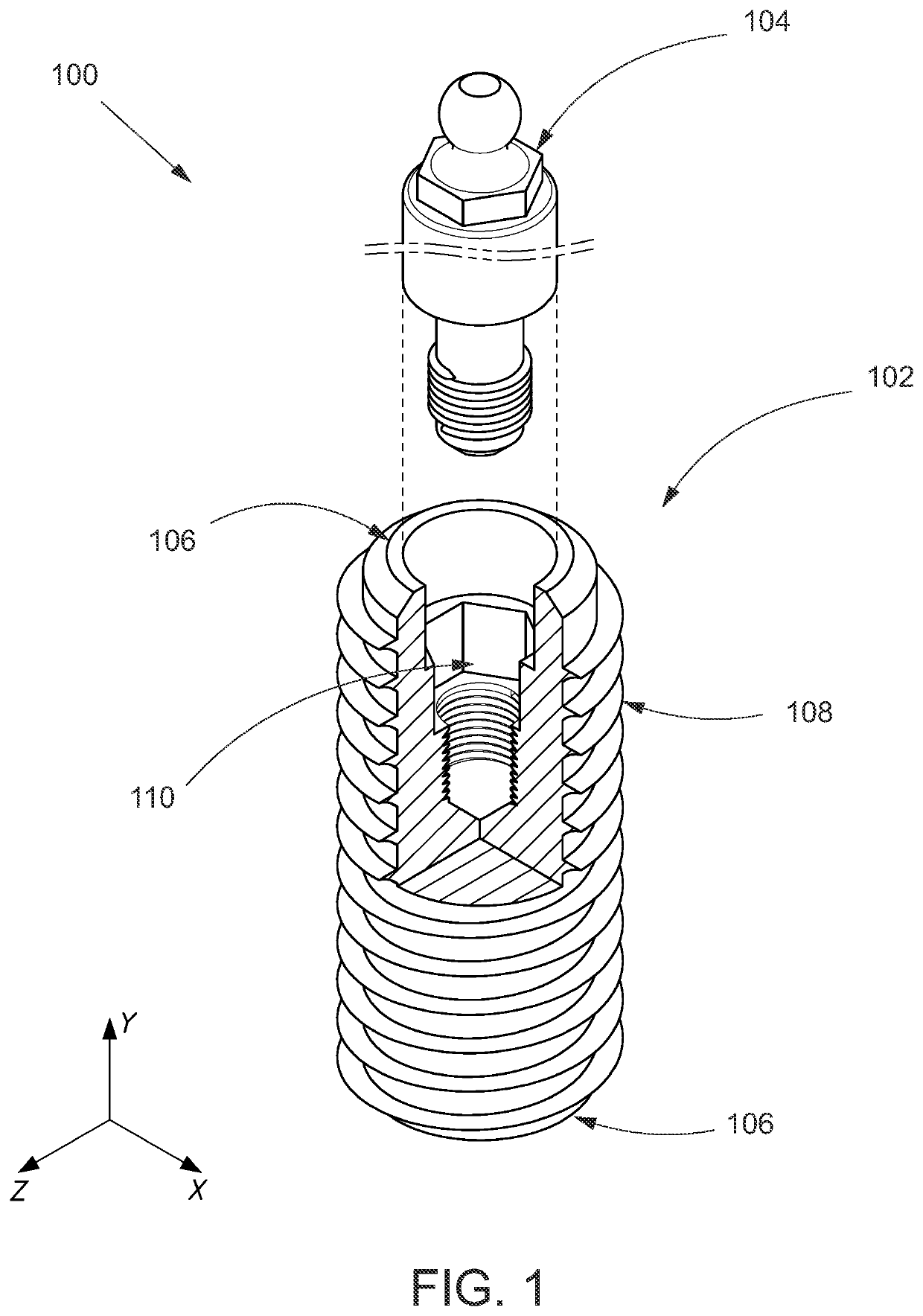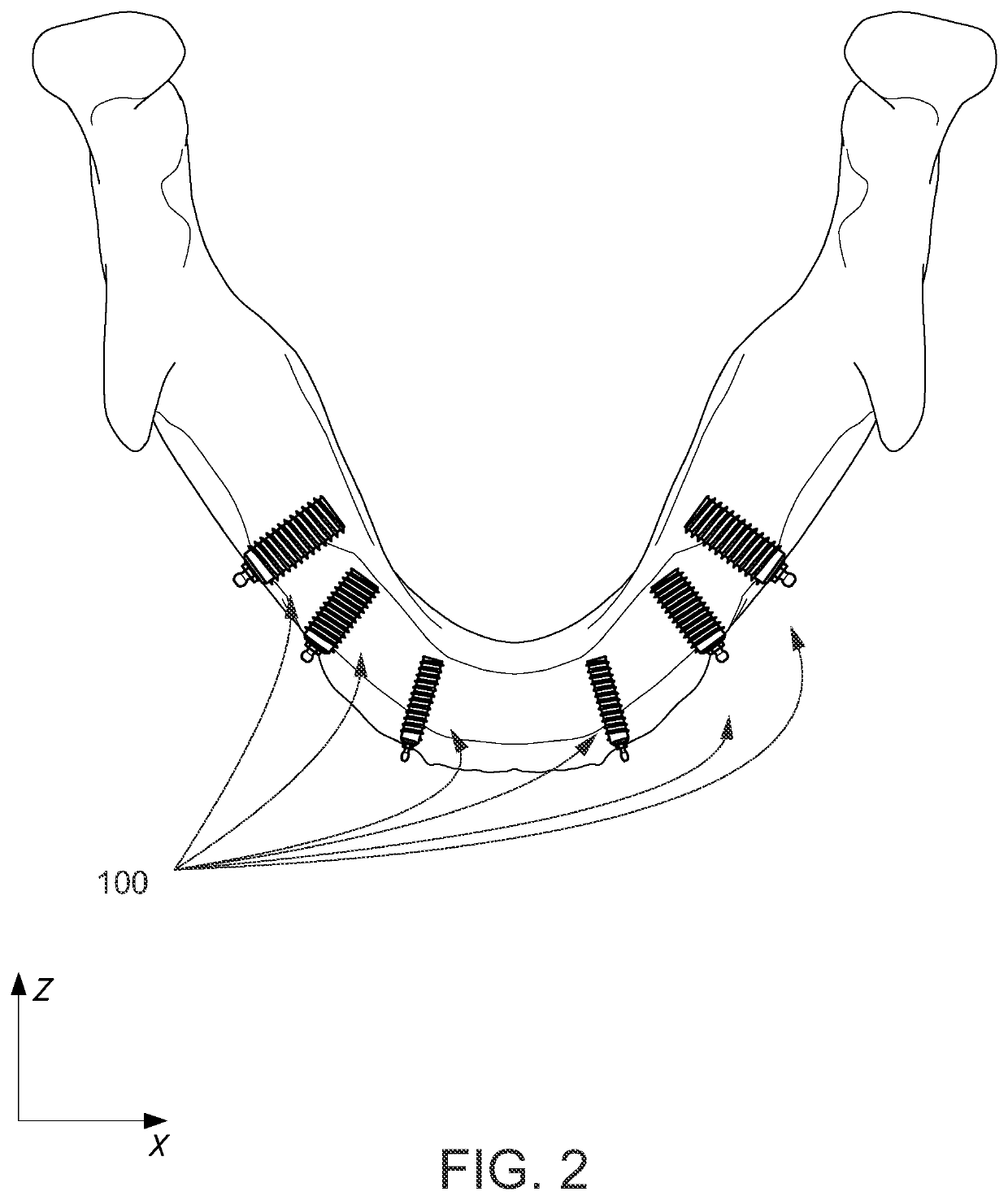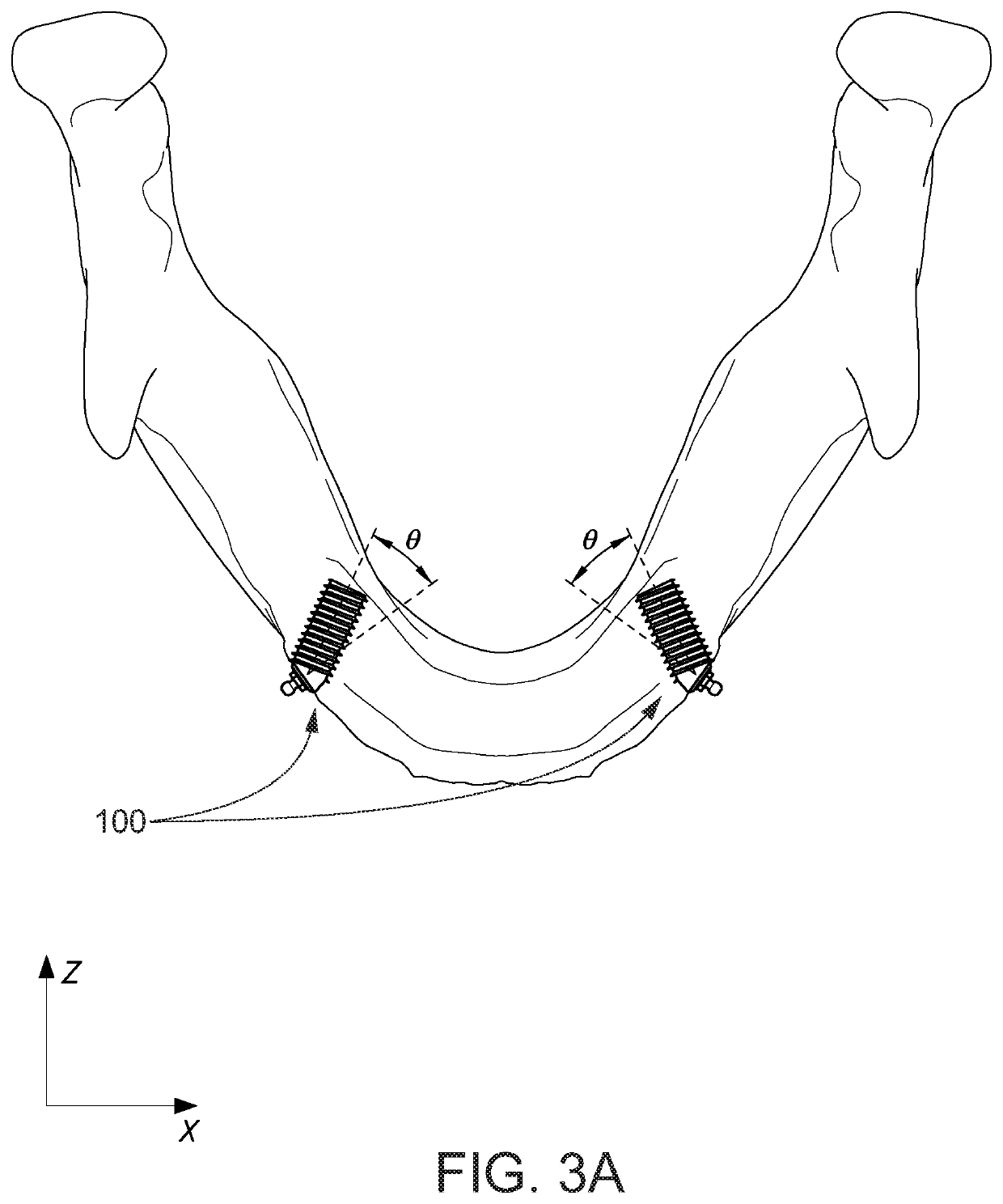Endosteal horizontally placed dental implant system and method
a dental implant and endosteal technology, applied in dental implants, dental surgery, medical science, etc., can solve the problems of bone resorption and deterioration, tooth loss is a problem experienced by millions of adults, loose or ill-fitting dentures, etc., and achieve the effect of wide versatility
- Summary
- Abstract
- Description
- Claims
- Application Information
AI Technical Summary
Benefits of technology
Problems solved by technology
Method used
Image
Examples
Embodiment Construction
[0061]Terminology used herein is used for the purpose of describing particular embodiments only, and is not intended to limit the scope of the present invention. It must be understood that as used herein and in the appended claims, the singular forms “a,”“an,” and “the” include the plural reference unless the context clearly dictates otherwise. For example, a reference to “an element” is a reference to one or more elements and includes all equivalents known to those skilled in the art. All conjunctions used are to be understood in the most inclusive sense possible. Thus, the word “or” should be understood as having the definition of a logical “or” rather than that of a logical “exclusive or” unless the context clearly necessitates otherwise. Language that may be construed to express approximation should be so understood unless the context clearly dictates otherwise.
[0062]Unless defined otherwise, all technical and scientific terms used herein have the same meanings as commonly under...
PUM
 Login to View More
Login to View More Abstract
Description
Claims
Application Information
 Login to View More
Login to View More - R&D
- Intellectual Property
- Life Sciences
- Materials
- Tech Scout
- Unparalleled Data Quality
- Higher Quality Content
- 60% Fewer Hallucinations
Browse by: Latest US Patents, China's latest patents, Technical Efficacy Thesaurus, Application Domain, Technology Topic, Popular Technical Reports.
© 2025 PatSnap. All rights reserved.Legal|Privacy policy|Modern Slavery Act Transparency Statement|Sitemap|About US| Contact US: help@patsnap.com



